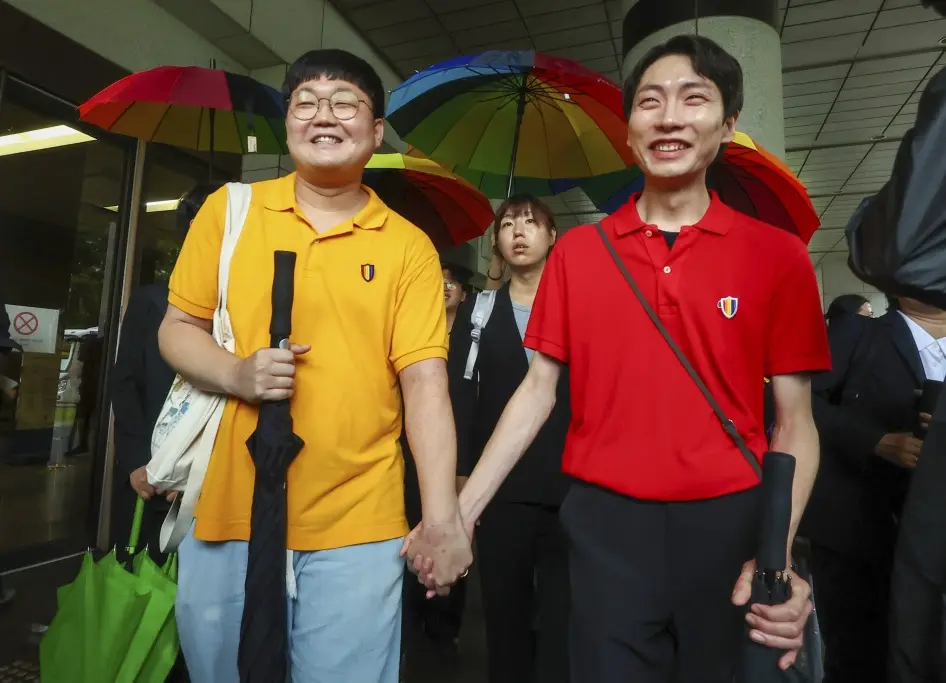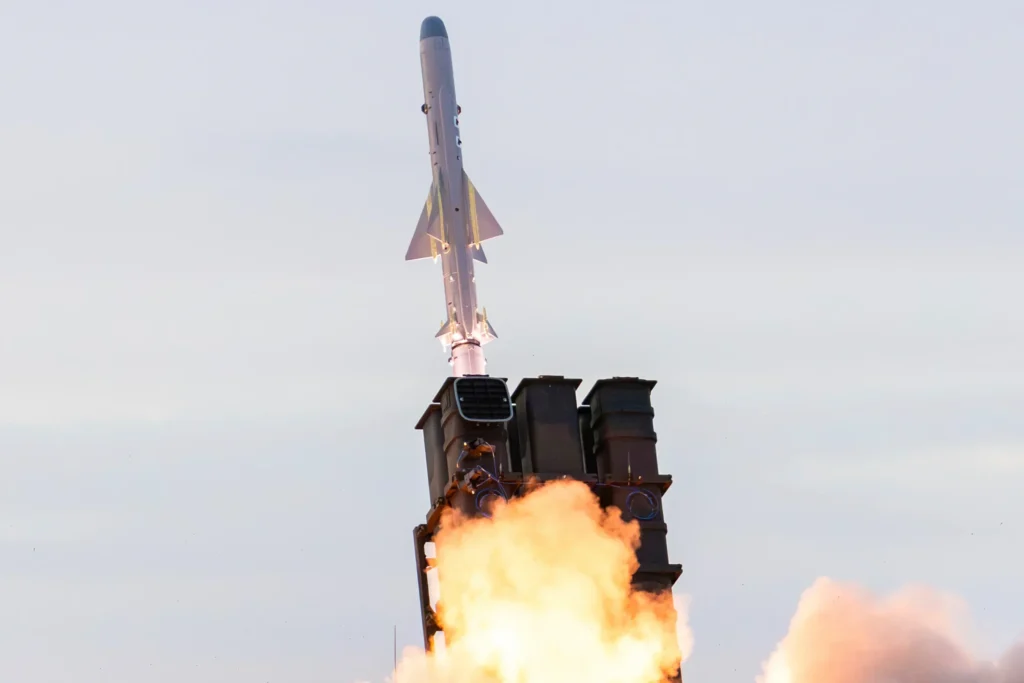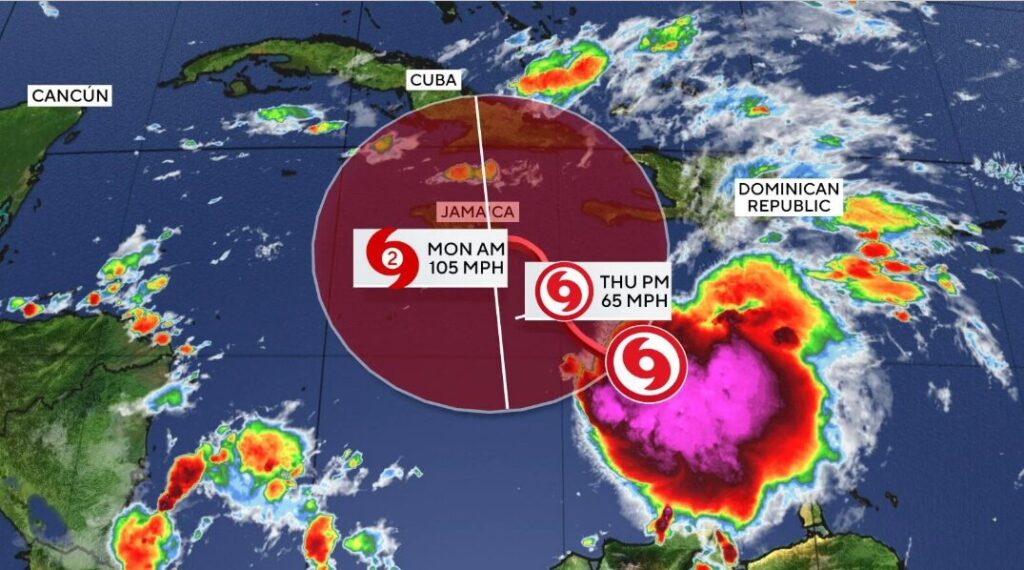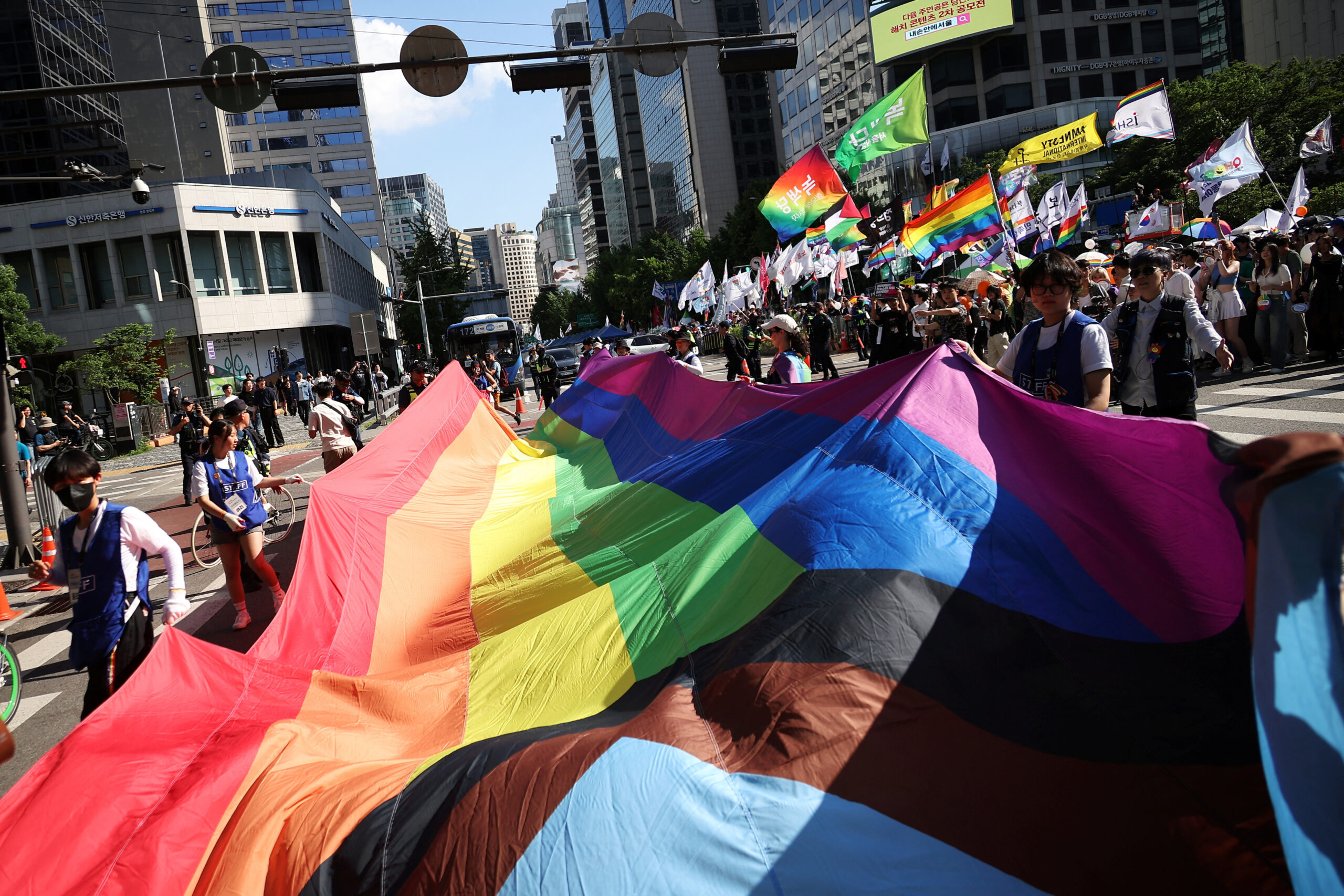In the span of days, three distinct but deeply revealing developments have surfaced across the breadth of our global horizon. Each one, quiet yet profound, immediate yet gesturing toward deeper currents, offers a window into the evolving world we inhabit. They are:
A landmark policy shift in South Korea regarding the census recognition of same-sex couples.

A missile launch by North Korea that challenged regional stability and stirred diplomatic ripples for Japan and its neighbors.
The rapid formation and intensification of Tropical Storm Melissa in the Caribbean, an ominous reminder of climate-fragile geographies and vulnerable populations.
On the surface, these stories might seem unrelated. One is domestic social policy, another is geopolitical tension, the third is a natural hazard unfolding. Yet each is, in its way, about visibility—of relationships, of threats, of fragilities—and about how societies respond when what was once hidden or distant becomes suddenly present.
Let us examine each story in turn, then reflect on what they collectively teach us about our time.
I. A Census Moment of Recognition in South Korea
A. What’s changed
The government of South Korea has announced that for the 2025 national census, the category of “spouse” or “co-habiting partner” will now be open to same-sex couples. This is the first time in the country’s history that those in same-sex partnerships with shared households will be able to select that category rather than being subsumed under “other cohabitants.”
Although same-sex marriage remains unrecognised under South Korean law, this shift is significant. Previously, same-sex couples were effectively invisible to official demographic counts when it came to partnership recognition. The census change brings them, for the first time, into the statistical fold.
B. Why it matters
At first glance it might seem like a mere administrative tweak: one check-box changed. But a census is no trivial list of names. It shapes how a society sees itself, how the state allocates resources, how public policy can respond to real lived conditions. Recognition in data is a kind of weighty symbolic act.
Advocates greeted the move as “historic” and “symbolic but meaningful.” It signals that the state is prepared to acknowledge that family and household arrangements are evolving and that same-sex partnerships should no longer be treated as aberrations hidden from the ledger.
It also creates a foundation. When households are counted, they can in principle be served, taxed, insured, legislated for. Meanwhile, invisibility makes advocacy harder: if your community does not appear in the numbers, it is harder to argue for change. This move shifts that dynamic.
C. The broader context and constraints
Yet this recognition does not amount to full equal rights. Same-sex marriage is still not legal in South Korea and there is no nationwide protection framework specifically for sexual orientation or gender identity.
To illustrate: the country’s Supreme Court in 2024 upheld a ruling allowing same-sex couples to be treated as dependents under the National Health Insurance Service. That was a major win. But it remains the case that many legal areas—inheritance, adoption, marriage rights, protection from discrimination—are still unresolved or uneven.
Public attitudes likewise remain mixed. A number of surveys suggest a majority of South Koreans still oppose same-sex marriage, even as younger generations show more openness.
Hence this census change is best understood as a step rather than a finish line.
D. What to watch going forward
Will this visibility in data translate into policy action, such as housing, taxation, spousal benefits, or anti-discrimination law?
Will legislation to recognise same-sex partnerships advance, backed by a tangible political movement?
How will social attitudes evolve, especially among older generations and in more conservative regions?
Will co-habiting partners feel an actual shift in dignity, or will the formal change remain largely symbolic?
In sum, South Korea’s census amendment stands as a quiet turning point. Not emancipation, but acknowledgment; not equality, but a recognition of reality. And sometimes recognition is the first step toward transformation.
II. A Missile Launch, a Diplomatic Jolt
A. What happened
On October 22, 2025, North Korea fired at least one ballistic missile from its east coast. The projectile flew into the sea, the East Sea or Sea of Japan, without penetrating Japanese airspace or exclusive economic zones, but the act nonetheless triggered immediate diplomatic and security responses from Japan.
Japan’s Prime Minister Sanae Takaichi, recently inaugurated, condemned the launch, convened a security meeting, and reaffirmed cooperation with the United States and South Korea to monitor further missile activities and enhance deterrence.

B. Why it matters
Missile launches by North Korea are not new. What is significant are the layers of meaning and implication in this one:
Timing: It comes at a moment when regional security is under pressure. Japan is navigating new defense postures, the U.S.–South Korea–Japan trilateral axis is tightening, and China’s strategic posture looms large.
Symbolism: The launch signals that Pyongyang is willing to escalate in public view and to insert itself into regional power dynamics even when the missile does not directly threaten Japanese territory. It reminds neighbours that the threat vector remains active.
Tactical posture: For Japan, even if the missile did not enter its airspace, the reaction set matters. It implies radar tracking, early-warning readiness, possibly coordination of missile-defence systems—cost and risk for Tokyo.
Diplomatic consequence: Japan lodged a formal protest, and defence dialogues will intensify. For Seoul, Pyongyang’s provocations serve as a reminder of the northern threat amid South Korea’s internal politics and upcoming regional summits.
C. What is at stake
One must recognize several dimensions here.
Security architecture: Japan’s stance is evolving. Historically constrained by pacifist post-war norms, Japan now is accelerating its defense capacity and cooperation with U.S. and regional allies. The missile launch compels Japan to demonstrate vigilance or risk appearing weak.
Regional diplomacy: North Korean actions often force Japan and South Korea into closer alignment or highlight divergences. How Tokyo and Seoul coordinate responses—diplomatically, militarily, publicly—matters for the broader stability of East Asia.
Internal politics: For Japan, Prime Minister Takaichi’s early handling of the incident is a test of her leadership and credibility on security. In South Korea, recent court rulings on same-sex couples could make regional cooperation feel more complex socially as well as strategically.
Global signalling: North Korea’s weapons tests serve multiple audiences: domestic (reinforcing regime strength), regional (testing defences, provoking responses), global (drawing in U.S., China, Russia). Each launch adds layers to arms control, sanctions regimes, and nuclear-missile dialogue.
D. Why the absence of direct threat still matters
Because threats are not just about impact. They are about perception, posture, and narrative.
Though Japanese territorial space was not breached, the launch undermines the baseline assumption of relative stability in the region.
It tests escalation ladders. Red lines may not have been crossed, but defences must be activated, plans adjusted, costs borne.
It highlights the limits of sanctions and diplomacy. Pyongyang is still capable of making moves that shift the conversation even when penalties are already in place.
E. What to watch going forward
Will Japan increase deployment of missile-defence systems, radar upgrades, or interceptor missiles, or deepen intelligence sharing with allies?
Will South Korea respond by amplifying its deterrence posture with the U.S., or seek new diplomatic channels with Pyongyang or China?
Will the missile launches escalate in frequency, range, or type, such as hypersonic or submarine-launched? If so, how will regional defence balances shift?
Will there be negotiated responses—diplomatic, sanction-based, or back-channel—or will this generate an arms spiral?
In short, this missile launch is not an isolated flare-up. It is part of a broader pattern of strategic signalling. In that sense, it matters precisely because the absence of immediate crisis does not mean the absence of consequence.
III. Tropical Storm Melissa: Nature’s Edge in the Caribbean
A. What we know
Tropical Storm Melissa has formed in the central Caribbean Sea and is rapidly gathering strength. Reports show:
- It is the 13th named storm of the 2025 Atlantic season.
- Sustained winds are around 50 mph and the system is moving west or west-northwest at a slow pace.
- Heavy rain—5 to 10 inches (12–25 cm) or more—is likely to fall on parts of Haiti, the Dominican Republic, and Jamaica.
- Some models project it could intensify into a Category 4 hurricane.
- Movement is uncertain, which could increase the risk of prolonged rainfall and flooding.

B. Why this matters
Natural-hazard events like Melissa reveal deep layers of human vulnerability—physical, infrastructural, social.
Vulnerable geographies: Haiti and Jamaica, among the islands most at risk, are particularly exposed to flooding, landslides, weak infrastructure, and already stretched resources. In Haiti especially, past storms have wrought disproportionate damage due to geographic fragility and social instability.
Intensification potential: The possibility of rapid intensification amplifies risk. Warm Caribbean waters and low wind shear create favourable fuel for storms to escalate quickly.
Slow movement means more damage: A slower-moving or stalling storm can dump massive rainfall over the same area, increasing flooding and landslide risk more than a fast-moving but less intense storm.
Global climate background: While no single event proves climate change, the context of warmer oceans, more available moisture, and shifting atmospheric patterns means that storms like Melissa are playing out in a more energetic, less forgiving environment.
C. The human and policy dimension
Preparation: Emergency shelters are being readied. Residents of low-lying areas are urged to evacuate.
Infrastructure stress: Roads, drainage systems, and housing—especially informal or substandard—are likely to fail under heavy rainfall and wind.
Economic fragility: Recovery costs for Caribbean nations are high and external assistance may be necessary.
Equity and justice: Disadvantaged populations—poorer communities, rural households, informal settlements—are disproportionately exposed. The storm thus underscores structural inequalities.
D. What to watch in the coming days
Track the storm’s path, whether it shifts north toward the Bahamas or Florida or continues west through the Caribbean Sea.
Monitor rainfall totals, especially if the storm slows or stalls.
Watch for rapid intensification signs such as stronger winds and tighter eye-wall formation.
Observe humanitarian response: how well local governments and international agencies mobilize.
Consider recovery resources: funds, aid, infrastructure rebuilding.
Ultimately: How will this storm and others like it influence climate adaptation policy in vulnerable regions?
IV. A Tri-Fold Reflection: Visibility, Agency, and Risk
Pulling these three threads together—social recognition in Korea, military signalling in Japan and Korea, and environmental hazard in the Caribbean—we find a deeper coherence.
1. Visibility as power
In South Korea, the act of officially counting same-sex couples is a form of visibility.
In East Asia, military launches make threats visible to allies, adversaries, and publics.
In the Caribbean, an intensifying storm reminds us that natural risks are now inescapably visible.
What is visible draws resources and demands responses. What remains invisible stays neglected. Recognition in statistics, threat, or hazard each frames how institutions and individuals act.
2. Agency amid constraints
These stories also show layered agency, some more powerful than others, but all within constraints.
Same-sex couples in Korea gain new formal recognition, but still operate under legal limits.
Japan and its allies act to deter threats, yet must navigate complex regional politics and nuclear questions.
Caribbean islands prepare for Melissa, yet their choices are limited by geography and economic capacity.
Progress and action occur, but always within structural realities. Recognition is not full liberation; defence is not conflict resolution; preparation is not prevention.
3. Risk and resilience
Each story points to a risk—social, military, environmental—and the resilience required to meet it.
For LGBTQ+ communities in South Korea, the risk is invisibility and discrimination.
For East Asia, the risk is instability and escalation.
For the Caribbean, the risk is tangible and immediate: storm damage and human suffering.
Taken together, these stories remind us that the world is changing in many dimensions—socially, geopolitically, environmentally. Recognition, vigilance, and preparation are all parts of a larger resilience puzzle.
V. Toward a Practical Insight
As we return from this wide lens to a more grounded perspective, a key practical insight emerges: institutional visibility matters, yet it must be linked to policy follow-through if it is to transform lives.
In South Korea, counting same-sex couples is a breakthrough, but unless the data leads to tangible rights, the lived effect may remain modest.
In Japan and its neighbours, tracking missile launches is necessary, but unless dialogue follows, one provocation will beget another.
In the Caribbean, storm tracking is vital, but unless infrastructure and aid improve, one bad hurricane season can undo decades of development.
Thus the lesson is simple and demanding. Visibility without follow-through is a beginning, not an endpoint.
Across these three narratives—South Korea’s recognition shift, East Asia’s missile anxiety, and the Caribbean’s tropical hazard—we glimpse the shape of our changing world. More inclusive where resistance lingers, more volatile where power balances shift, more fragile where climate stress deepens. Each story demands attention. Each invites action. And together, they remind us that the global is always local, that policy, threat, and climate are not distant abstractions but present realities.
The practical work is to pair clarity with courage and to carry recognition forward into real protections, real stability, and real resilience.

